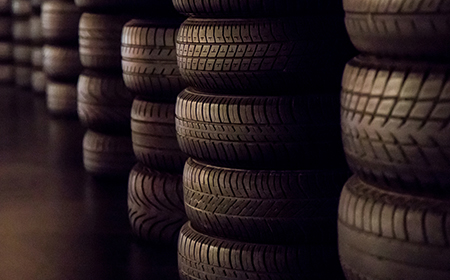What is Low Rolling Resistance?
Tires with low rolling resistance require less energy than standard tires to propel them, which increases fuel efficiency. The easier it is to roll the tires, the less heat is generated, and the less fuel needed to advance the vehicle.
How to reduce rolling resistance and improve fuel economy?
The easiest way to improve the rolling resistance of a tire is to increase the air pressure, however an over-inflated tire will wear faster in the center of the tire, have less traction, and will impact the ride comfort and handling of the vehicle. For this reason, tire engineers try to squeeze every bit of rolling resistance out of a tire by means other than increasing the air pressure.Reducing the mass of the tire by using less material, or by using materials that are lighter, can help reduce rolling resistance and improve fuel economy. Materials like silica added to the tread compound can reduce the amount of friction without sacrificing traction. Low rolling resistance tires can also be designed to have stiffer sidewalls which reduce the amount of heat generated by the tire, which means less energy consumed.
How much gasoline will I save with low rolling resistance tires?
Many factors go into fuel economy. The largest factor is your driving habits. If you are the type of driver that accelerates fast and brakes hard, or are in a lot of stop and go city traffic, you will use up a lot more fuel than a highway driver that accelerates and brakes smoothly and gently. All conditions being equal, the typical low rolling resistance tire should save somewhere between 1.0% and 4.0% per gallon compared to a traditional all-season that does not have low rolling resistance features.
What does this mean for me?
Low rolling resistance tires can save you money and reduce your carbon footprint without any compromise to safety or how long your tires last. Using the current (March 2017) average of $2.25/gallon, the typical driver of the average domestic sedan would save approx. $33/year by choosing LRR tires vs standard tires.* Over a three or four year life span for a set of tires, this can easily add up to the equivalent value of getting one tire free.
*Based on an estimated 24 mpg, 11.3K miles driven/year and 3% fuel economy savings.
